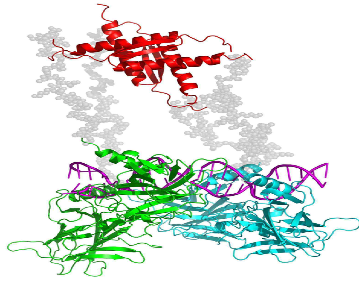Fluorescence resonance energy transfer analysis of the folding pathway of Engrailed Homeodomain
F Huang, G Settanni, AR Fersht
– Protein Eng Des Sel
(2008)
21,
The role of the turn in β‐hairpin formation during WW domain folding
T Sharpe, AL Jonsson, TJ Rutherford, V Daggett, AR Fersht
– Protein Sci
(2007)
16,
Comparative Biophysical Characterization of p53 with the Pro-apoptotic BAK and the Anti-apoptotic BCL-xL
B Sot, SMV Freund, AR Fersht
– Journal of Biological Chemistry
(2007)
282,
Quaternary structures of tumor suppressor p53 and a specific p53 DNA complex.
H Tidow, R Melero, E Mylonas, SMV Freund, JG Grossmann, JM Carazo, DI Svergun, M Valle, AR Fersht
– Proceedings of the National Academy of Sciences of the United States of America
(2007)
104,
Searching for multiple folding pathways of a nearly symmetrical protein:: Temperature dependent Φ-Value analysis of the B domain of protein A
S Sato, AR Fersht
– Journal of Molecular Biology
(2007)
372,
Correlation of Levels of Folded Recombinant p53 in Escherichia coli with Thermodynamic Stability in Vitro
S Mayer, S Rüdiger, HC Ang, AC Joerger, AR Fersht
– Journal of molecular biology
(2007)
372,
The folding pathway of an FF domain:: Characterization of an on-pathway intermediate state under folding conditions by 15N, 13Cα and 13C-methyl relaxation dispersion and 1H/2 H-exchange NMR Spectroscopy
DM Korzhnev, TL Religa, P Lundström, AR Fersht, LE Kay
– Journal of Molecular Biology
(2007)
372,
The helix-turn-helix motif as an ultrafast independently folding domain:: The pathway of folding of Engrailed homeodomain
TL Religa, CM Johnson, DM Vu, SH Brewer, RB Dyer, AR Fersht
– Proceedings of the National Academy of Sciences
(2007)
104,
Solution structure of ASPP2 N-terminal domain (N-ASPP2) reveals a ubiquitin-like fold.
H Tidow, A Andreeva, TJ Rutherford, AR Fersht
– Journal of molecular biology
(2007)
371,
Four domains of p300 each bind tightly to a sequence spanning both transactivation subdomains of p53.
DP Teufel, SM Freund, M Bycroft, AR Fersht
– Proceedings of the National Academy of Sciences
(2007)
104,


